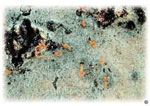
Cytospora canker is a fungal disease that causes cankers on branches and trunks of several species of trees and shrubs, including aspen, cottonwood and other poplars, spruce, apple, cherry, birch and silver maple. Cytospora is perhaps most commonly recognized on aspen because this canker’s orange bark discoloration sharply contrasts with the white bark of aspen trees.
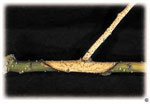
Symptoms are not limited to orange bark discoloration. Look for yellow or orange-brown to black discolored areas on the trunk and branches. Often, a liquid oozes from aspen and a gummy substance oozes from peach and cherry trees. Cankers are sunken dead areas of bark with black, pinhead-sized pimples. The pimples are the reproductive structures of the fungus. Under moist conditions, masses of spores may ooze out of the pimples in long, coiled, orange, thread-like tendrils.
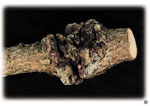
On spruce trees, symptoms are quite different. Look for sunken areas surrounded by a swollen callus, giving a gall-like appearance. This canker is orange in the middle and surrounded by a gray hued, oozing area.
Cytospora can weaken the host plant, subjecting it to attack from other plant pests. Eventually, cytospora alone can kill the infected host.
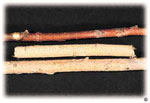
The species of fungi that cause cytospora canker are weak pathogens and only attack trees already under stress. Sources of stress include: mechanical damage to roots caused by construction, line trimmer damage, heavily compacted soils, drought, foliar fungal disease and general plant neglect. Properly caring for newly transplanted trees is essential for preventing cytospora.
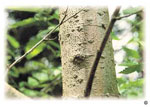
Once infection occurs, the best treatment is to increase plant vigor and sanitation. Remove infected limbs, making certain to disinfect tools after each cut. If cytospora is a recurring problem, replant the area with resistant species. Trees that do not get cytospora include pine, juniper, hackberry, linden and maple.
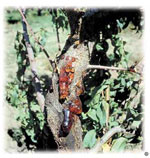
For more information, see the following Colorado State University Extension fact sheet(s).



